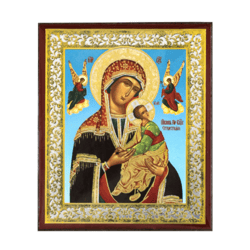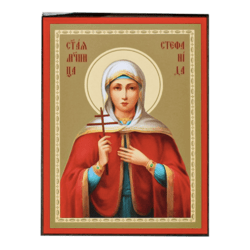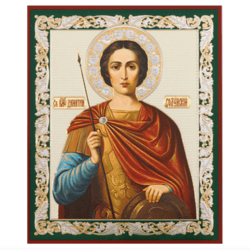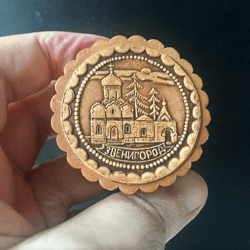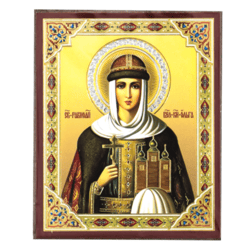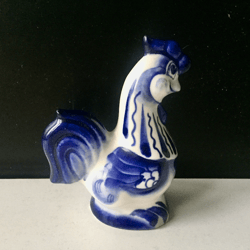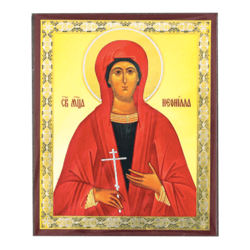John the Forerunner icon | Silver Gold foiled | Inspirational Home Decor | Size: 8 3/4"x7 1/4"
Quantity
- Size: 22 x 18 x 0,6 cm
- lithography icon print on wood
- silver and gold foiled
- handcrafted
- Made in Russia
In icons, Saint John the Baptist often appears with wings behind his back and his severed head in his hands. What is the meaning behind this image? And why do we commemorate the severing of the honorable head of John the Baptist?
This common iconographic depiction of John the Forerunner received the name “Angel of the Desert”. So why does this icon portray a mortal with wings?
King Herod Antipas, reproved by John for his sins, had him thrown into jail. As he was celebrating a feast, he promised his stepdaughter to fulfill her wish. The stepdaughter consulted her mother and asked for the severed head of the Prophet John to be brought to her on a platter.
The wings are symbols of his angelic life. As we know from the Gospel, John lived in a wilderness, wore camel skins, and ate acrid and wild honey. As we read about his life, we sense the austerity of existence. In essence, he lived as a monk, hermit, and ascetic. Not surprisingly, then, the Church glorifies him as the patron saint and forerunner of all monastics. In the Angel of the Desert Icon, we see a desert and mountain, and the scroll in John the Baptist’s hand reads: “Repent, for the kingdom of heaven has come near.” (Matthew 3:2).
Blessed by the clergy at Saviour Cathedral in Moscow.





















